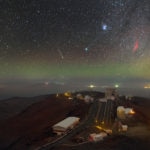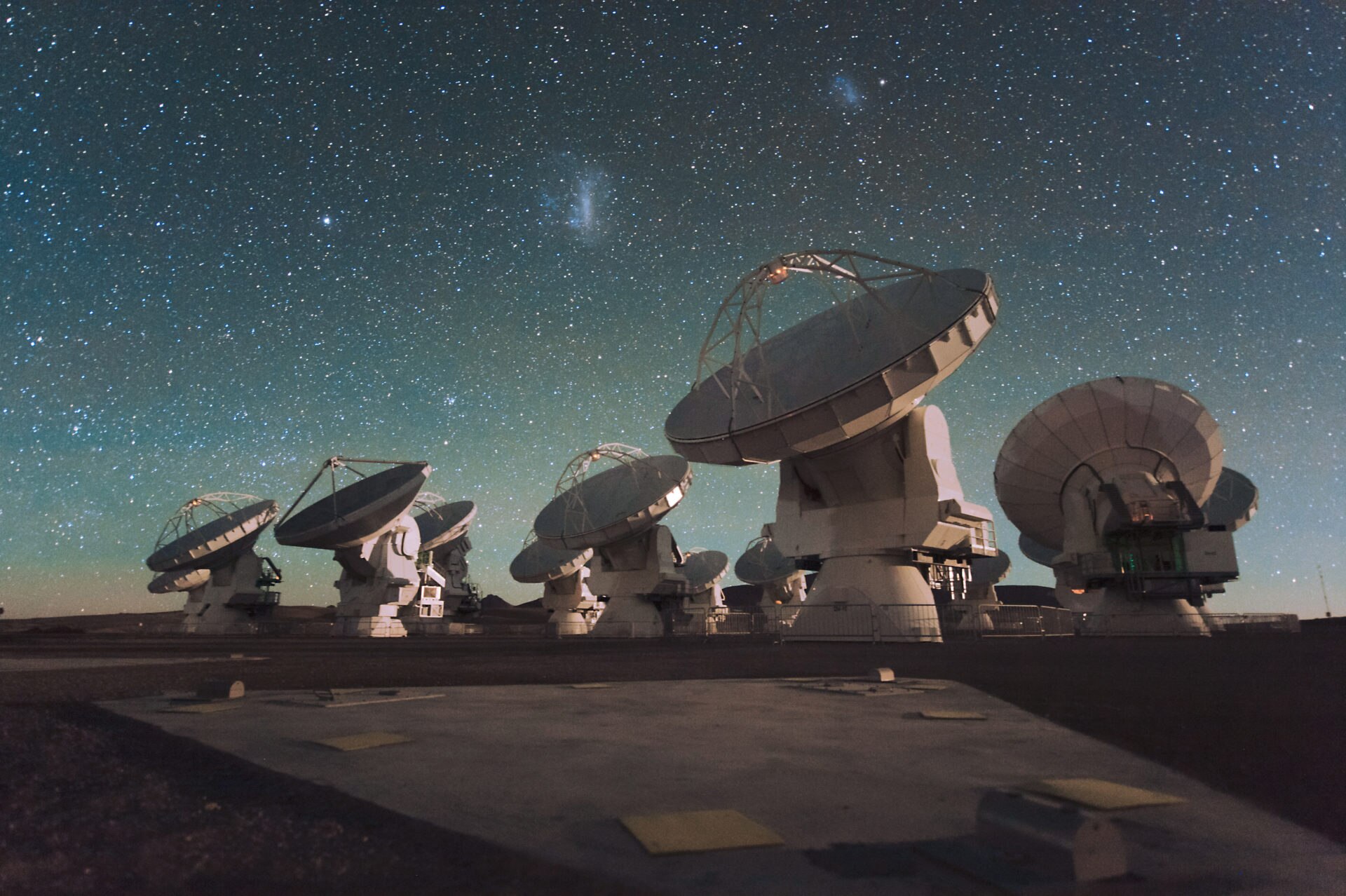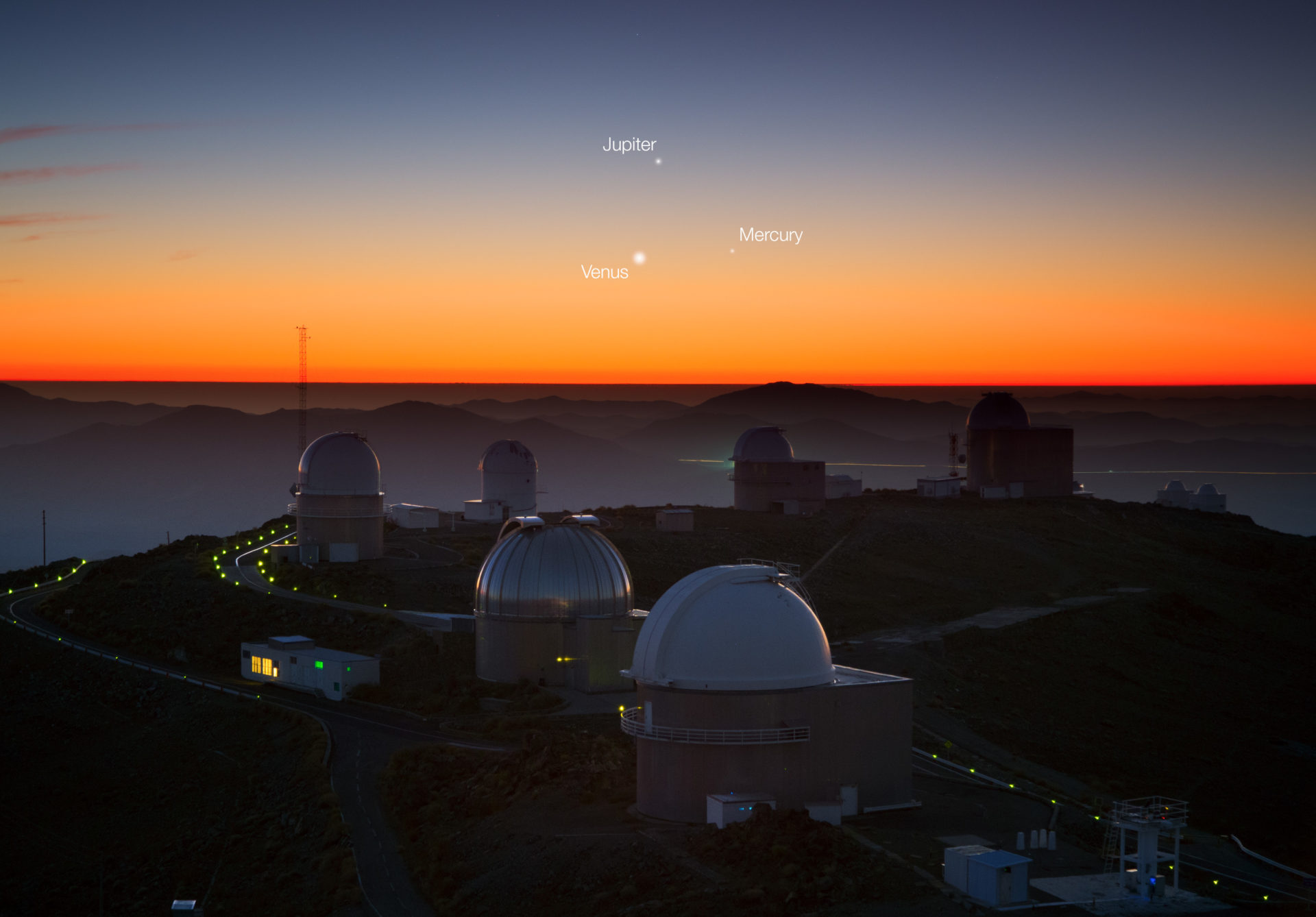The global astronomical community turns its eyes to Chile’s skies
For Chileans, stars have become a valuable natural resource, capable of attracting millions in investments in the shape of the most advanced astronomical observatories, which have populated the arid Atacama desert landscape little by little. Thanks to them, scientists from across the world can enlighten humanity with their discoveries about galaxies, exoplanets and different interstellar events.

Every night, northern Chile’s skies, unspoiled windows into the universe, treat scores of scientists and stargazing buffs to an assortment of black holes, exoplanets, solar storms, supernovas, and many more celestial bodies and astronomical phenomena.
A privilege afforded by a Chilean geography that has proven extremely generous when catering to astronomers’ needs: its location in the Southern Hemisphere, optimal weather and atmospheric circulation conditions, low air mass turbulence, high mountains that allow the observation of the universe from the visible to the infrared range, low humidity, low light and radioelectrical pollution levels and cold sea currents. The combination of all these factors results in the planet's highest clear sky index: spotless skies 90% of the nights throughout the year.
Thus, the region has become the world’s leading astronomy hub, an irresistible magnet for astronomers, who travel to Chile to take part in a broad variety of research projects aiming to shed light on the mysteries of the universe. And this status poised to keep on building over the coming decade through the development of new projects.
Domes in the desert
There are currently more than 20 operational observatories in Chile’s Antofagasta and Magallanes regions, but it is definitely the northernmost fringes that concentrate the largest and most important number complexes. Although several belong to national universities, a good number of them are run by the international astronomy organizations behind the downpour of millionaire investments that have washed Chile’s desert: the National Optical Astronomy Observatory (NOAO), Cerro Tololo Inter-american Observatory (CTIO), European Southern Observatory (ESO), Las Campanas Observatory (LCO), The Gemini Observatory and Large Synoptic Survey Telescope (LSST).
Among the aforementioned institutions, ESO’s contribution stands out the most, being responsible for the La Silla Observatory, in the Coquimbo region and the development of the Paranal observatory (Very Large Telescope) - currently the most advanced and powerful astronomy complexes - and the Atacama Large Millimeter Array (ALMA, www.almaobservatory.org), a 66 7-meter (23 feet) and 12-meter (39 feet) antenna array built on the Chajnantor plateau, 5,058.7 meters (16,000 feet) above sea level, in the Atacama desert. With a cost of over €1 billion , ALMA is the largest and most expensive ground-based telescope ever built.
-
 1
1Atacama Large Millimetersubmillimeter Array
-
 2
2Three planets dance over La Silla
-
 3
3Paranal
However, and despite the huge amount of progress already made in Chile in the development of astronomical infrastructures, plans have already been drawn that will surely underpin the country’s predominance in the field. Today, the country already accounts for a notable 40% of the world’s observation capacity, a percentage that is guaranteed to expand to 70% over the next decade with the projects that are currently under construction, even to 85% by 2025 if the country is awarded two large projects that are currently being discussed.
One of them is Cerro Armazones, the mountain located in the Vicuña Mackenna range - about 130 km (80 mi.) southeast of the city of Antofagasta – that will host the 39-meter (182 feet) European Extremely Large Telescope (E-ELT). The other is the TMT (Thirty Meter Telescope), which may end up being built on the Tolar or Tolonchar mountains, in Chile, instead of on the Mauna Kea volcano, its original planned location in Hawaii, due to the opposition that the project has stirred in the islands. If so, construction should start on April 2018.
Astrotourism
The popularity of astronomy in Chile has grown to an extent that it has become another tourist attraction.
Framed within the “special interests” category, “astrotourism” (http://chile.travel/que-hacer/astroturismo/) is promoted through both scientific observatories and a number of facilities that have been designed especially for the general public. Multiple operators offer all types of accommodation services and tours related with this matter. Also, in order to promote astrotourism in the country, authorities have developed a number thematic educational websites, such as www.turismoastronomico.cl (and its English version, www.astronomictourism.com).
Among all the observatories open for tourists, maybe the best is Cerro Mamalluca, an joint initiative by the Vicuña Municipality and astronomy fan club CASMIA (Club de Aficionados a la Astronomía), sponsored by the Cerro Tololo Inter-American Observatory. Also, near Andacollo, on the summit of Cerro Churqui, 1,300 meters (4,265 feet) above sea level, stands the Collowara observatory, managed by the Andacollo Lodging Network. However, without a doubt, one of the largest and most modern is the Cruz del Sur Observatory in Combarbalá, which opened in 2009 and spans a four-dome structure with powerful digital 14 and 16 inch digital telescopes.
Further north, in the Chiu Chiu village (in the Antofagasta Region plateau), is the Paniri Caur Observatory. With its large white dome, it offers the particularity that it interweaves modern astronomic observation techniques with the Andean world view of the Atacama indigenous peoples. All this, through stargazing tours, guided treks and visits to rock art sites, and daytrips to picturesque villages in the area.
The tourism potential that astronomy brings to the country has also contributed to the development of innovative promotion initiatives, such as the Chile Mobile Observatory application.
Developed by LFI Agencia Digital for Fundación Imagen de Chile. What is it for? To allow everyone to enjoy and share images of the universe captured by the ALMA, ESO (La Silla, Paranal, Llano de Chanjnator – APEX) and CATA, to name a few, from Android-powered mobile devices. The application is available for download at the Google Play store and at www.chilemobileobservatory.com. The app also provides access to multiple records on planet formation, galaxy collisions and supernovas, images that users can rate, download and share in the social media.
All this bears witness to the increasingly pivotal role that astronomy is playing in the Country, which is turning the Milky Way into a natural resource that adds to the country’s cultural and natural heritage. In Chile, the sky is not a limit.